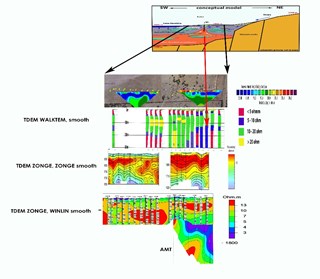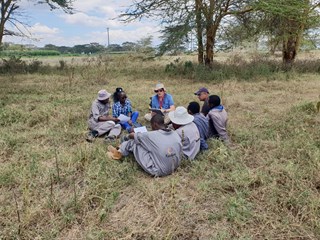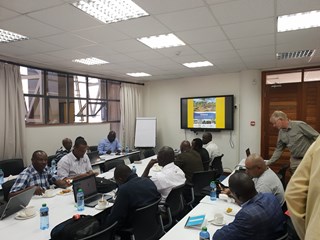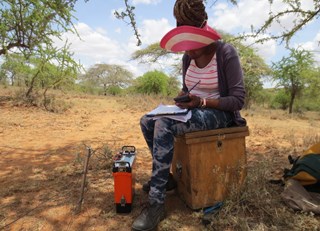Improving Sustainable Groundwater Exploration in Kenya
Research on applied conventional and new geophysical methods
Geophysics and groundwater exploration remains a very specialized field of work. For an outsider it is often hard to comprehend which methods are being used and how indications and characterization of underground water are being established. Between February 2017 and November 2018 the project ‘Improving Sustainable Groundwater Exploration with Amended Geophysics’ - abbreviated to ISGEAG – was executed. In this project, different geophysical methodologies are researched, applied and compared in Kenya. Knowlegde sharing and on-the-job trainings with the equipment were also part of the project.
ISGEAG investigates the application of different existing, conventional (VES, HEP) and new geophysical methods (AMT, ERT, TDEM) in three reasonably well-researched areas (basement rock of Kajiado, coastal sandstones of Kwale and volcanic rock of Naivasha) to show the limitations of the different geophysical methods, study their best combination for each different context and improve the interpretation of the measurements. An on-the-job training trajectory did run parallel to the research program.
At each location, but especially at the typical coastal setting of Kwale (fresh-salt water intrusion and sandstones) and in the volcanic rock geology belonging to the Eastern Rift Valley system of Naivasha, the methods of the different geophysical methods (most notably ERT and the TDEM WalkTEM) were integrated. Results were combined with existing borehole and geophysical survey data (so called ‘hydrogeological conceptual puzzling’) introduced spectacularly better results opposed to conventional geophysical techniques such as VES and HEP.
The direct and indirect impact of the ISGEAG project is hard to quantify, although some signs indicate that a change has been brought about:1) Growth in hydrogeological conceptual thinking of ISGEAG participants, 2) Urgency and better understanding of (coastal) fresh-salt situation created, 3) the Kajiado, Kwale and Naivasha study outcomes contributed to more effective hydrogeological advice, 4) knowledge-sharing between Dutch, Kenyan and other international partners on geophysics, groundwater exploration and borehole drilling, both public and private partners, has been stimulated and improved.
ISGEAG is a partnership led by Acacia Water together with AMREF Health Africa, Kenya Electricity Generating Company Limited (KenGen), SamSam Water Foundation and Wiertsema & Partner B.V. The ISGEAG project was funded by the Dutch innovation program VIA Water (https://www.viawater.nl/), which is again executed by Aqua for All (A4A) and funded by the Dutch Ministry of Foreign Affairs.
All ISGEAG final and technical reports can be found back on the website of SamSam Water. (https://www.samsamwater.com/projectdata.php?projectid=81) For more information, please contact our colleage Stefan de Wildt (mailto:stefan.dewildt@acaciawater.com).
 proving of hydrogeological conceptual model Naivasha
proving of hydrogeological conceptual model Naivasha
 20181101_112856
20181101_112856
 20181106_100940
20181106_100940
 VES_measurement_Kajiado
VES_measurement_Kajiado